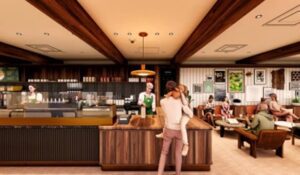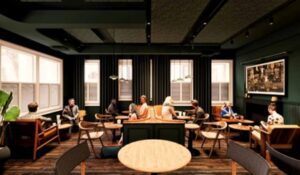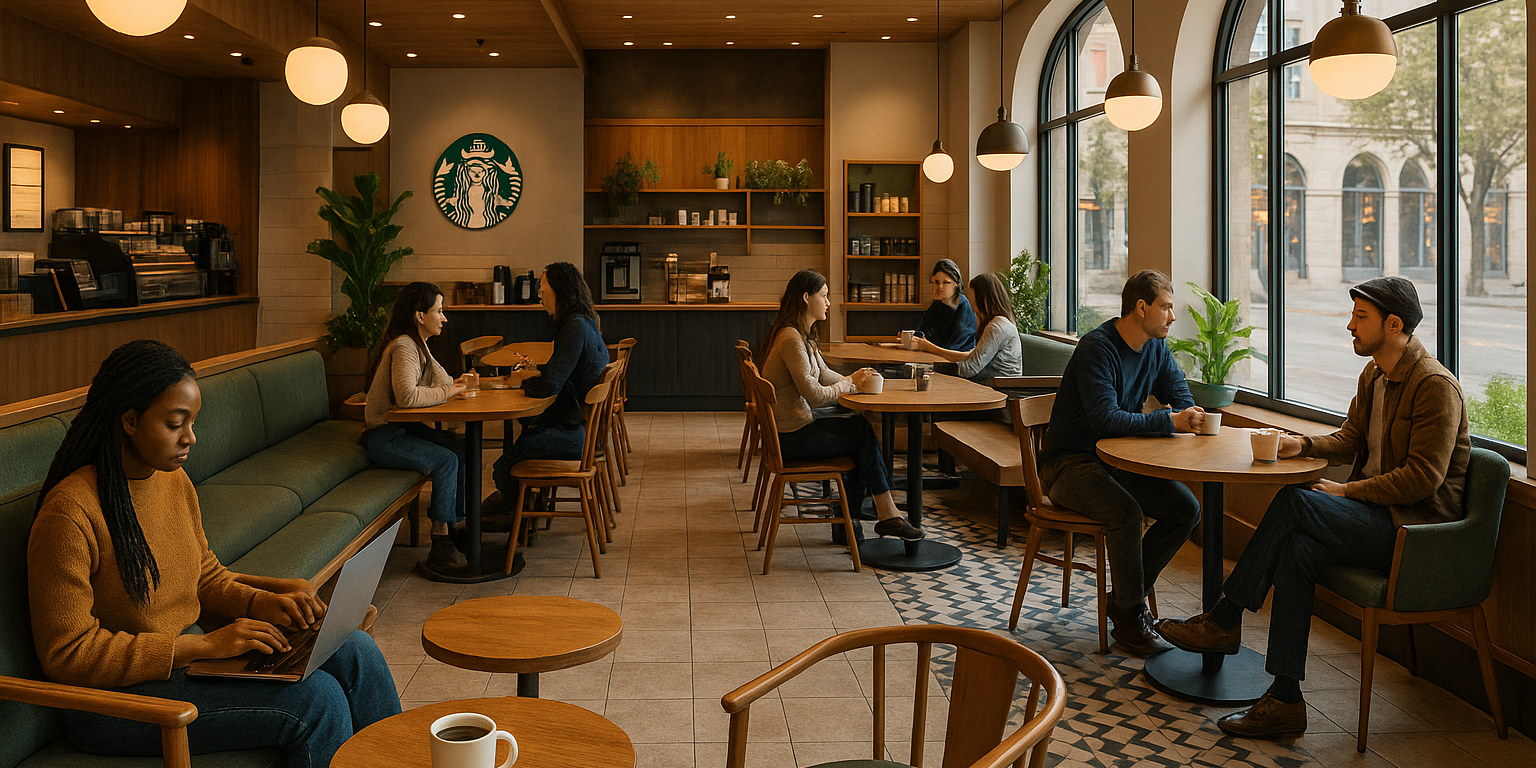 Starbucks’ latest store design reflects the brand’s effort to revive café culture in stores. CEO Brian Niccol wants to revitalize the “third space” between work and home with changes that provide a more comfortable experience that makes guests want to stay longer. The company is introducing free refills, ceramic mugs, and an expanded variety of seating options in its attempt to capture a classic café setting, a significant shift from the fully contactless, pickup-only stores developed in recent years.
Starbucks’ latest store design reflects the brand’s effort to revive café culture in stores. CEO Brian Niccol wants to revitalize the “third space” between work and home with changes that provide a more comfortable experience that makes guests want to stay longer. The company is introducing free refills, ceramic mugs, and an expanded variety of seating options in its attempt to capture a classic café setting, a significant shift from the fully contactless, pickup-only stores developed in recent years.
The idea of café culture is often associated with European urban design, but frequently Paris in particular. The city is known for its wide boulevards lined with cafes, plazas, and outdoor spaces that encourage social engagement. But this modernized urban vision is relatively new in Paris’ history, coming to be only in the mid to late 19th century. At the time of Napoleon’s empire, Paris still retained a medieval character, with historic buildings and high density, narrow streets which became very unsanitary. When Napoleon III (nephew of Napoleon I) was elected the first president of France, part of his platform emphasized sanitation reforms, leading him to appoint Baron Georges-Eugène Haussmann as the director of Paris’ urban renewal.
“Hausmannization” was the process of reorganizing the urban fabric of Paris between 1853 and 1871, and it was quite violent. Aerial views of Paris’ boulevards look as if they were carved into the city blocks, which isn’t far from the truth. Hausmann referred to himself as an “artist-demolitionist” (since he had no prior experience in urban planning), demolishing 100,000 apartments in 20,000 buildings and displacing thousands of people with almost no compensation. And because the decreased availability of housing caused a surge in rent prices, all the benefits of Hausmann’s plan—clean sewers, new parks and squares, streets wide enough to fit outdoor cafes, landscaping, and fountains—could only be enjoyed by Paris’ elite.
 Whether it be on a city-scale or a single store, making room for the “third space” is challenging because improving quality of life it is not quantifiably efficient. Designing for efficiency in car-centric cities, especially with online ordering being more commonplace than ever, means prioritizing space for kitchens, drive-throughs, and restrooms, which can all be optimized to fit specific equipment and predictable tasks. On the other hand, cafes, as well as parks, squares, and fountains, only exist for comfort and indulgence, making them subjective and impossible to optimize. Because of this, the “third space” never develops spontaneously—it must be intentionally planned and accounted for.
Whether it be on a city-scale or a single store, making room for the “third space” is challenging because improving quality of life it is not quantifiably efficient. Designing for efficiency in car-centric cities, especially with online ordering being more commonplace than ever, means prioritizing space for kitchens, drive-throughs, and restrooms, which can all be optimized to fit specific equipment and predictable tasks. On the other hand, cafes, as well as parks, squares, and fountains, only exist for comfort and indulgence, making them subjective and impossible to optimize. Because of this, the “third space” never develops spontaneously—it must be intentionally planned and accounted for.
The expense of constructing and maintaining the expanded café space means that Starbucks must recoup some of its costs elsewhere by limiting discounts and changing their conduct policy to require guests to place an order to use the dining room or restroom. The improvements to store comforts inevitably result in compromises elsewhere, but Niccol is confident in this new direction. This confidence reflects the brand’s determination to create better spaces for its customers.
Author: Nathan Morse








